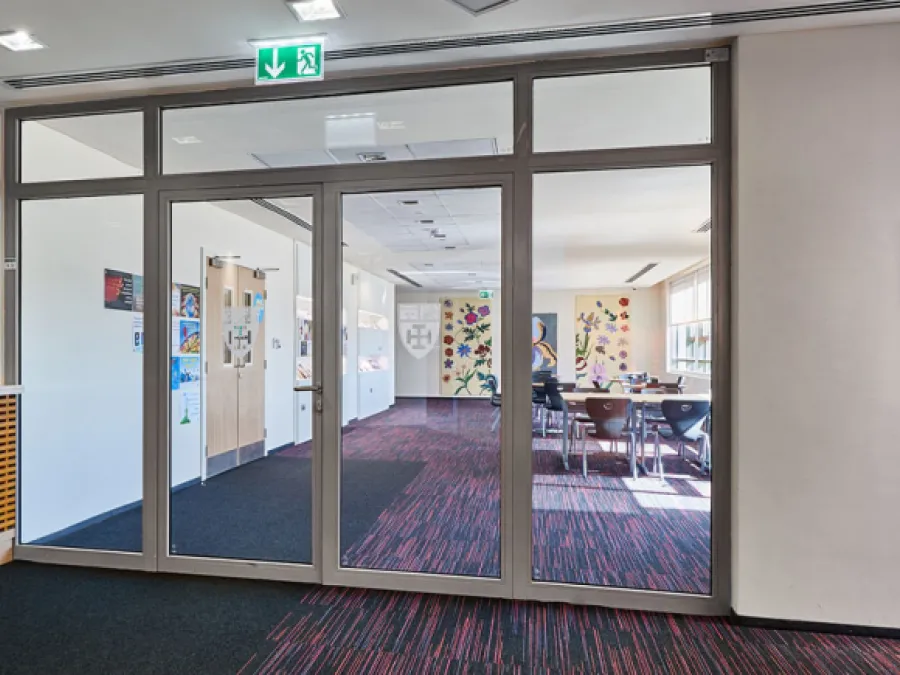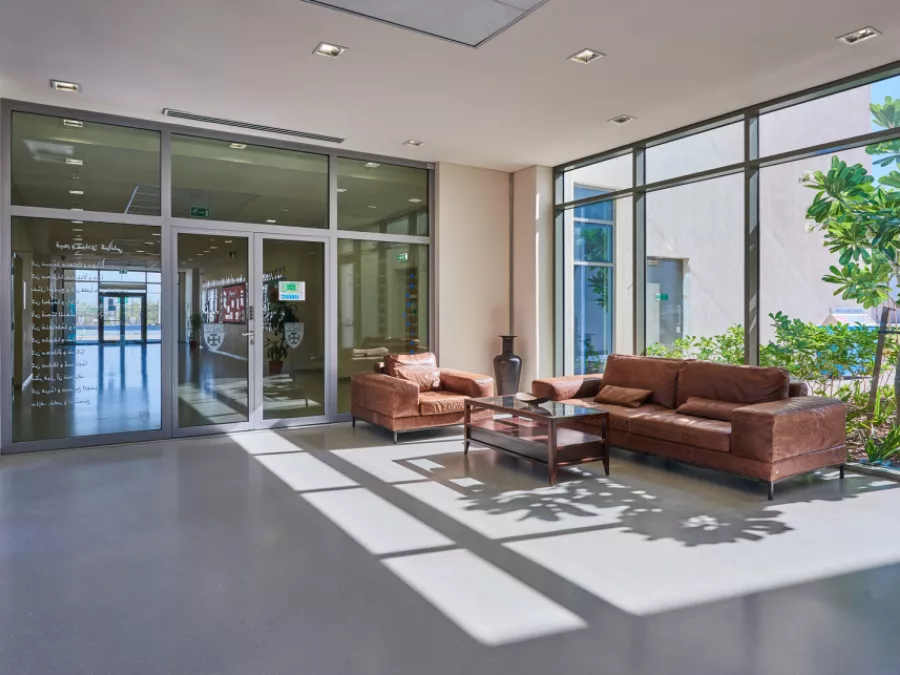Enhancing Fire Safety in Schools

Ensuring fire safety in schools protects lives and preserves a conducive learning environment. As campuses grow and risks increase, integrating advanced technologies becomes essential.
Fire-resistant glass and effective compartmentalisation slow the spread of flames and smoke, allowing for safer evacuation. These innovations enhance safety without disrupting the educational atmosphere, providing comprehensive protection for students and staff.
Understanding Fire Safety Challenges in Schools
As school environments grow larger, the risk of fire hazards increases due to high student density and multiple vulnerable zones. Some of the most common fire hazards include:
-
Electrical faults in classrooms and administrative areas
-
Lab accidents involving chemicals and flammable substances
-
Kitchen fires in cafeterias and food preparation zones
Children may panic or struggle to follow exit protocols during emergencies, making compartmentation essential. Fire-resistant materials and advanced safety technologies help contain fire and smoke effectively, ensuring safer evacuations and protecting lives and property.

Why Glass Plays a Vital Role in School Environments
Glass enhances school environments by offering a blend of natural light, safety, and a conducive learning atmosphere.
1. Ensuring Well-Being and Growth
Exposure to natural light through glass contributes to children’s physical and mental well-being. It promotes healthy growth, strengthens immunity, and uplifts mood. This positive environment boosts creativity, enhances attentiveness, and helps teachers engage students more effectively.
2. Maximising Learning Potential
Natural light streaming through glass improves focus and concentration. Students become more alert, grasp concepts better, and retain information longer. A study by the Heschong Mahone Group found that students in well-lit classrooms scored up to 25% higher on standardised tests compared to those in dimly lit environments.
Additionally, exposure to natural light has been linked to improved mood and increased alertness, which are crucial for effective learning.
3. Enhancing Fire Safety and Containment
Fire-resistant glass acts as a protective barrier, containing flames and smoke within designated zones. It also prevents heat transfer, ensuring safer evacuation and minimising damage.
Key Considerations for Implementing Fire Safety Innovations
Ensuring fire safety in schools requires a strategic approach that focuses on identifying critical areas, adhering to safety standards, and maintaining system efficiency.
1. Identifying High-Risk Areas
Certain zones like lift lobbies, basements, staircases, ducts, server rooms, and labs are more vulnerable during fires. Installing appropriate fire-rated doors, glazing, and barriers in these areas prevents the spread of fire and smoke, enabling safer evacuations.
2. Compliance with Fire Safety Codes
The National Building Code (NBC) mandates fire-resistant doors, glazing, and barriers for critical school areas to ensure effective fire containment and safer evacuations:
-
Lift Lobbies: Require a 120-minute fire-rated barrier to prevent fire and smoke spread.
-
Basements: Must have 120-minute fire-rated doors to contain potential fire hazards.
-
External Staircases: Need 120-minute fire doors and 60 minutes fire protective glazing for nearby windows to ensure a secure escape route.
-
Ducts & Shafts: Require a 120-minute fire rating to prevent fire from spreading through service openings.
-
Battery & Server Rooms, Labs: Must be compartmentalised with fire-resistant barriers to contain potential electrical and chemical fire risks.
Adhering to these regulations ensures compliance with safety standards, reducing emergency risks and protecting students, staff, and infrastructure.
3. Regular Inspections and Staff Training
Periodic maintenance of fire protection systems is essential to guarantee functionality during emergencies. Simultaneously, conducting regular staff training equips personnel with the knowledge to respond swiftly and efficiently, ensuring the safety of occupants.
Integrating Advanced Fire Safety Measures in Schools
Modern school fire safety goes beyond prevention as it requires effective containment, rapid response, and strategic protection. A well-planned approach combines fire-rated materials, advanced detection technologies, and compliance with safety regulations to create a secure learning environment.
Fire-Resistant Glass: A Vital Safety Component
-
Containing Fire and Smoke: Creates fire compartments in hallways, stairwells, and classrooms, slowing fire progression and enabling safer evacuations.
-
Ensuring Clear Visibility: Allows emergency responders to assess conditions and plan evacuations efficiently, reducing panic.
-
Preventing Heat Transfer: Minimises secondary fire risks by containing extreme temperatures within fire zones.
Strengthening School Infrastructure with Fire Safety Innovations
-
Smart Detection Systems: Advanced sensors enable faster fire identification and suppression.
-
Compliant Safety Installations: Fire-rated doors, barriers, and glazing in high-risk areas prevent fire spread.
-
Long-Term Protection: Investing in high-performance fire safety measures safeguards future generations and ensures regulatory compliance.

Safeguarding Schools with Innovative Fire Protection
Implementing advanced fire safety solutions in schools is essential to protect lives, safeguard property, and ensure compliance with safety standards. Integrating fire-resistant glass, such as Vetrotech’s VDS® Solutions, enhances protection by preventing the spread of fire and smoke while maintaining visibility and structural integrity. As fire risks evolve, investing in these innovations ensures a safer environment for students and staff, securing the future of educational institutions.
